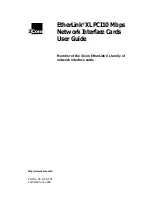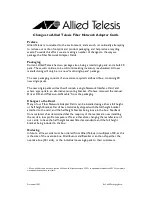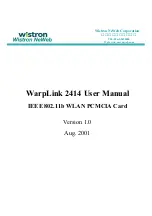
16
MDE-LEDI-NETWORK-TDS-4099V3.0
3.2. LEAP SECOND
3.2.1. Definitions
What is a leap second, what is its purpose, when does it occur?
Find answers here:
https://en.wikipedia.org/wiki/Leap_second
3.2.2. Protocols incorporating a leap second
NTP, DCF, TDF and IRIG-B IEEE 1344 protocols include a field in their messages to indicate
that a leap second will occur. This information is given throughout the last day in NTP, the
last hour in TDF/DCF or the last minute in IRIG-B before it takes effect.
Unlike NTP, TDF and IRIG-B, the DCF code does not indicate whether a second should be
added or removed. In practice only additions are made.
3.2.3. LEDI
®
Network TDS performance
When an
LEDI
®
Network TDS
has a leap second indication (configured or received in NTP),
it continues to operate normally by propagating the indicator until the precise moment of
occurrence of the event (30th June or 31st December at midnight). At midnight, it will
authorise the jump of the second so as not to trigger an alarm, apply the insertion and stop
transmitting the indicator to the time outputs.
If the manual setting of the leap indicator (see
section 5.2.8 > “input” page > Manual setting
of the leap indicator) is configured, the time entry indicator is ignored. This configuration will
be cancelled in January or July. The setting Manual setting of the leap indicator
(see section
5.2.8. > “input” page >
Return to "No additional second
) allows you to select whether the
manual indicator returns to the deactivated state or
“No additional second” at this
cancellation.
An
LEDI
®
Network TDS
that receives a second input more than 1 minute late or early can
invalidate the time input and continue autonomously or deactivate its time outputs if the
safety threshold is set to one second.













































